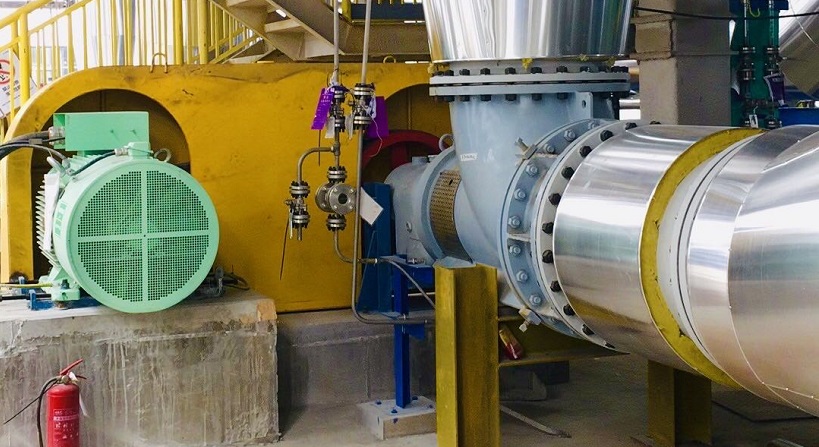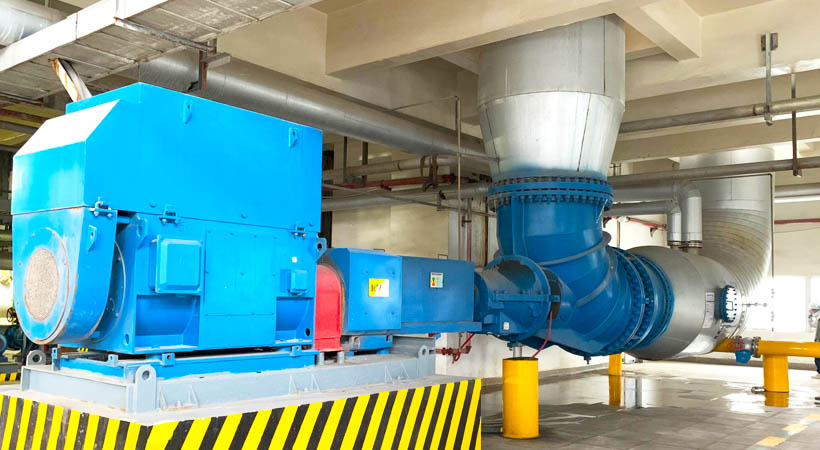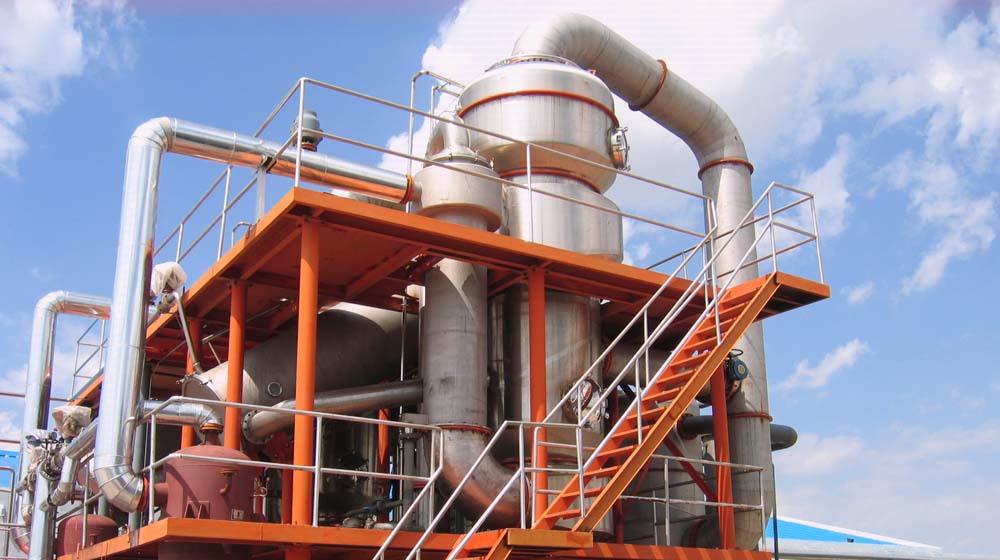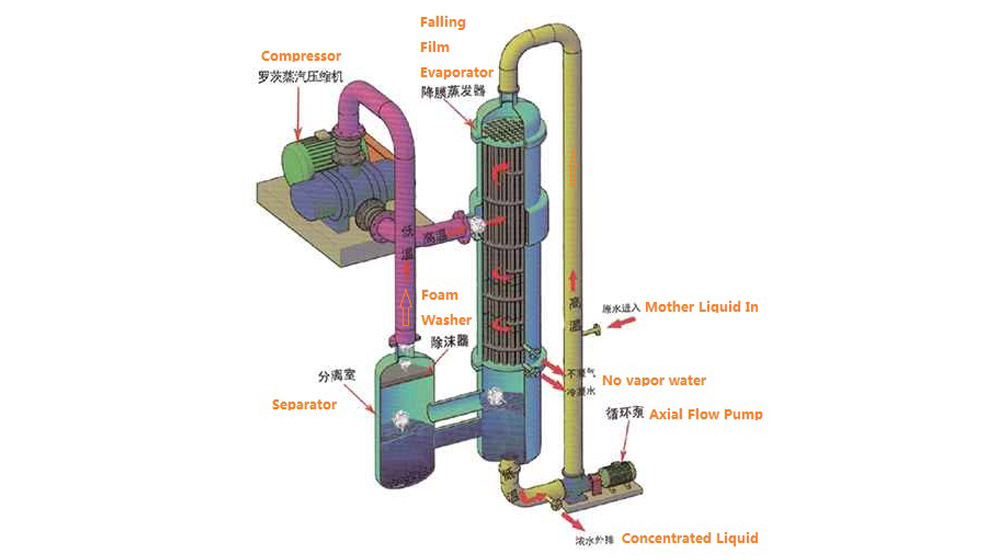What are the advantages and disadvantages of multi effect falling film evaporator?
- Falling film evaporator、 rising film evaporator and scraper film evaporator are all called film evaporator.
- Falling film evaporator is divided into multi-effect falling film evaporator and MVR falling film evaporator.
- Multi-effect falling film evaporator is more suitable for heat-sensitive materials, so what are its advantages and disadvantages?
1.Multi-effect falling film evaporator structure and working principle
At present, the multi-effect falling film evaporator has achieved continuous operation in vacuum low temperature working conditions, and has the advantages of strong evaporation capacity and energy saving. Falling film evaporator has obvious advantages and is widely used in chemical, light industry and food processing industries to achieve the purpose of liquid concentration.
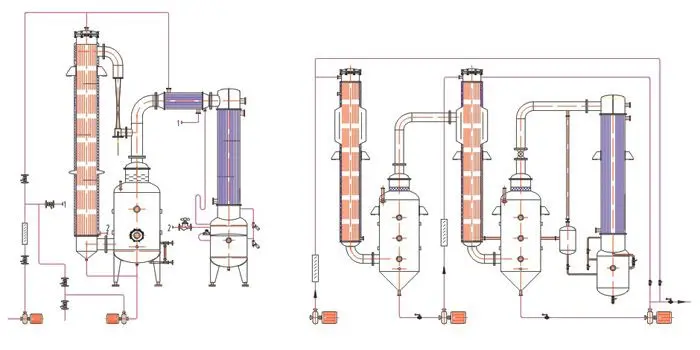
1.1Multi-effect falling film evaporator structure
- The structure of the falling film evaporator is not complicated, it can be simply understood as a vertical tubular heat exchanger with a set of film distribution device, but it has an obvious difference with the ordinary heat exchanger, its shell is fixed for the heating fluid, and the tube is fixed for the evaporated material.
1.2.Working principle of multi-effect falling film evaporator
- In a falling film evaporator, the material traveling through the tube section enters the heat exchange tubes from the top, relying on its own gravity to flow downward along the tube wall. Before entering the heat exchange tubes, it passes through a film-former, resulting in a thin film when it enters the tubes. As the material descends from top to bottom, moisture is evaporated, achieving the purpose of material concentration. In the shell section, if steam condensation or thermal oil heating is used, steam enters from the top and exits from the bottom, while thermal oil should flow from bottom to top.
- It’s evident that the flow direction of the media inside and outside the tubes may not always be countercurrent. However, this isn’t crucial because the internal pressure of the tubes remains relatively constant, preventing significant changes in fluid temperature. Any variations in the temperature of the medium inside the tubes are primarily due to changes in concentration, resulting in only slight increases in boiling point.
2.Features of multi-effect falling film evaporator
- The material solution in a multi-effect falling film evaporator enters from the top, forming a film along the tube wall due to gravity’s pull. As it journeys downward, it undergoes evaporation and thickening until it reaches the bottom as a concentrated liquid. This type of evaporator is adept at handling materials with high concentrations and viscosities. With only one pass through the heat exchange tubes, the material undergoes heating and evaporation, ensuring a brief exposure to heat. Consequently, this multi-effect falling film evaporator maintains the superior quality of heat-sensitive materials.
- Because the solution moves in a film-like manner within the single-pass evaporator, the heat transfer coefficient is relatively high. Operating under vacuum further ensures the quality of heat-sensitive materials, making the evaporator a dependable choice.
- With its brief residence time, there’s minimal risk of material degradation, making it perfect for handling heat-sensitive substances. The startup and shutdown processes of the multi-effect falling film evaporator are straightforward and swift, ensuring efficient operation.
- Because the process fluid moves solely under the influence of gravity rather than relying on high temperature differentials, it can utilize low temperature differentials for evaporation.
3.Advantages of multi-effect falling film evaporator
- The short residence time of materials inside the heat exchange tubes ensures that it doesn’t alter the chemical properties of heat-sensitive materials.
- The material inside the heat exchange tubes takes on a thin film-like shape and flows swiftly, resulting in a high evaporation heat transfer coefficient.
- There is almost negligible pressure drop, as the material in the tube section operates under atmospheric pressure, relying entirely on its own gravity to flow downward along the tube wall, thus promoting energy efficiency.
- Since the material in the tube section flows downward along the tube wall by its own gravity rather than being propelled by pressure differentials, low temperature differentials can be utilized.
- The amount of material retained in the tube section is extremely minimal.
- After heating, the material in the tube section exhibits convective boiling, so the surface condition of the heat exchange tubes hardly affects the boiling of the material.
4.Disadvantages of falling film evaporator
- The effectiveness of equipment evaporation is directly related to the distributor, which demands high standards in design, manufacturing, and installation.
- Installation requirements are stringent, particularly in terms of verticality. For instance, if the length of the heat exchange tubes is 9 meters, the equipment’s verticality requirement is ≤6.4mm.
- It’s essential to ensure complete wetting of the inner walls of the heat exchange tubes while keeping the film thickness minimal. Achieving this requires precise design calculations based on material feed rates and heat exchange tube lengths.
- The high standards in design and manufacturing result in a significant increase in equipment procurement costs.
- Materials prone to scaling or containing suspended solids are unsuitable. It’s worth noting that multi-effect falling film evaporators may not be suitable for materials with low evaporative water content, as they may struggle to meet the required steam velocity. Therefore, these evaporators are not suitable for evaporating concentrated solutions or materials with high viscosity, crystallization tendencies, or scaling potential.

